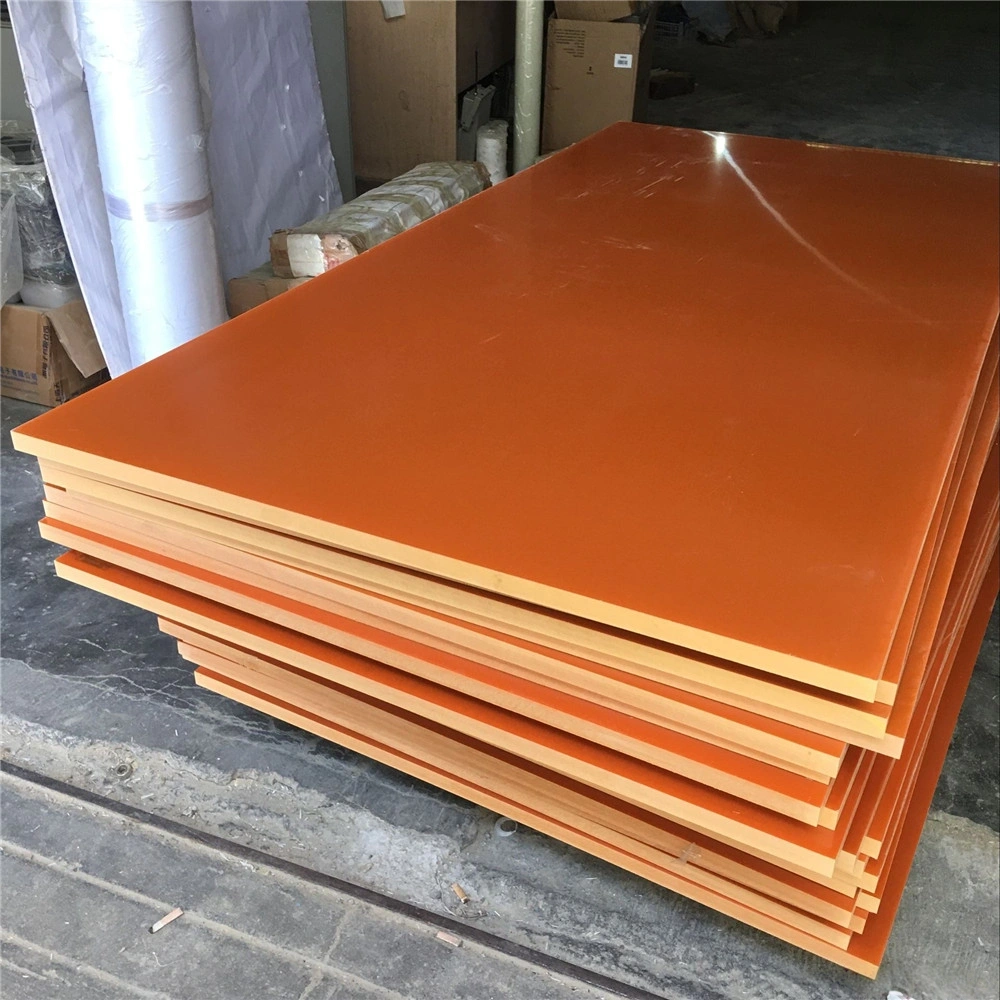
When you hear “thermosetting resin,” what comes to mind?
Today, thermosetting resins are typically produced in smaller volumes than thermoplastic resins and often play a supporting role in the materials industry. However, did you know that the first synthetic resin ever invented was not a thermoplastic, but a thermosetting resin called bakelite?
Thermosetting resins undergo a chemical reaction when heated, resulting in polymerization that forms a three-dimensional network structure, which hardens as a result. There are various types of thermosetting resins, including epoxy resin, phenolic resin, polyurethane resin, and melamine resin, each with unique characteristics and applications.
Here we’ll explore its types, characteristics, advantages, and applications to aid in material selection.
Table of Contents
1.What is bakelite?
2.Types
3.Advantages
4.Major Applications.
5.Conclusion
1.What is bakelite?
bakelite is a thermosetting resin known for its balanced properties, currently available as laminated sheets where the resin is combined with a base material. It is used in various sectors, including advanced materials. bakelite can be seen as a resin that supports our daily lives from the background.
As a relatively affordable thermosetting resin, bakelite boasts excellent heat resistance, strength, and electrical insulation properties. Despite the rise of thermoplastic resins changing its landscape, it continues to adapt and find new market niches. Today, its unique properties are still being leveraged in new applications, with its use expected to grow.
Also referred to as “phenolic resin,” bakelite is a thermosetting resin invented in 1872 by the German chemist Adolf Bayer. In 1907, Belgian-born American chemist Leo Baekeland patented the manufacturing process. It’s recognized in industrial uses as a heat-cured material applied to paper or fabric. Beyond these applications, it is utilized in adhesives, coatings, and electrical insulation materials. Its primary ingredients are phenol and formaldehyde, which, when heated with an acid or base catalyst and mixed with curing agents, form a three-dimensional, mesh-structured bakelite.
2.Types
bakelite is typically not sold as a pure resin, but as laminated sheets made by layering resin with a base material (either paper or fabric). These sheets are produced by applying resin to each base material and then curing it through a heating process. Sheets based on paper are known as “Paper bakelite,” while those based on cloth are called “Fabric bakelite.” Each has distinct features:
Paper bakelite
This variant is cheaper (about half the cost) and lighter than Fabric bakelite. It’s recommended for situations where electrical insulation is a priority. However, its high water absorption rate because of the paper base is a drawback.
Fabric bakelite
Fabric bakelite outperforms the paper type in mechanical properties, making it suitable for strength-dependent applications. Like its paper-based counterpart, it absorbs water readily, limiting it to low-humidity environments.
3.Advantages
High Heat Resistance
As a thermosetting resin, bakelite is notable for its heat resistance. It can withstand temperatures between 302 to 356°F (150 to 180°C), retaining its strength even at high temperatures.
Excellent Electrical Insulation
Its superior electrical insulation capability makes bakelite valuable for electrical insulation materials, such as printed circuit boards, breakers, and distribution board coatings.
High Mechanical Strength
bakelite’s remarkable mechanical strength, especially in the fabric type, makes it ideal for impact-resistant applications. Note that the direction of the fibers in the base material (paper or fabric) affects the strength of the material.
Processable Through Injection Molding
When molding bakelite with resin alone, it can be processed using injection molding, similar to thermoplastic resins. It’s heated to just below its curing point (around 122°F/50°C), injected into a mold, and then cured at 302 to 356°F (150 to 180°C).
4.Major Applications
Since industrial production began in 1907, bakelite has been used in many familiar products, such as tableware, kitchen utensils, buttons, watches, and accessories. However, with the invention of many thermoplastic resins, including nylon and fluororesin, some applications have been replaced due to considerations of moldability and cost. Today, bakelite is rarely molded into new products, but its unique properties continue to inspire the development of various applications.
For example,it is used in printed circuit boards, switchboards, and circuit breakers, leveraging its excellent electrical insulation properties. Printed circuit boards are essential not only for IT devices like PCs and tablets but also for modern electrical appliances. Thus, it’s fair to say that bakelite is utilized in all fields involving electricity.
Additionally, it serves functional roles as an adhesive, shell mold material, and paint. For instance, it is used as an adhesive in sand molds for casting and as a binder for 3D printer materials. It also acts as a photoresist material, taking advantage of its solubility in alkali and its ability to absorb light in the 200 to 300 nm range.
Furthermore, bakelite is employed as a high-performance material in various applications, including metal replacement parts, negative electrode materials for lithium-ion batteries, and as a raw material for activated carbon in medicine.
5.Conclusion
bakelite, also known as phenolic resin, is the world’s first synthetic resin that was developed over 100 years ago. It is a thermosetting resin with a good balance of performance, including excellent heat resistance, strength, and electrical insulation, while being relatively inexpensive. Currently, it is not distributed as a single resin but as a laminated board made by interweaving a base material (paper or fabric) with the resin.
Its advantages include excellent heat resistance and electrical insulation, high strength, and the ability to be processed by injection molding. On the other hand, it also has disadvantages such as difficulty in recycling, high water absorption, and vulnerability to ultraviolet rays.
Today, bakelite is used in a variety of situations, including printed circuit boards, distribution boards, adhesives and paints, photoresist materials, and negative electrode agents for lithium-ion batteries. The development of its applications will continue to progress in the future.
Backed by decades of expertise, Yilong delivers high-quality bakelite laminates that combine reliability, performance, and value—empowering industries with trusted insulation solutions.
For technical support or business inquiries, please contact us at yilong@yilonginsulation.com